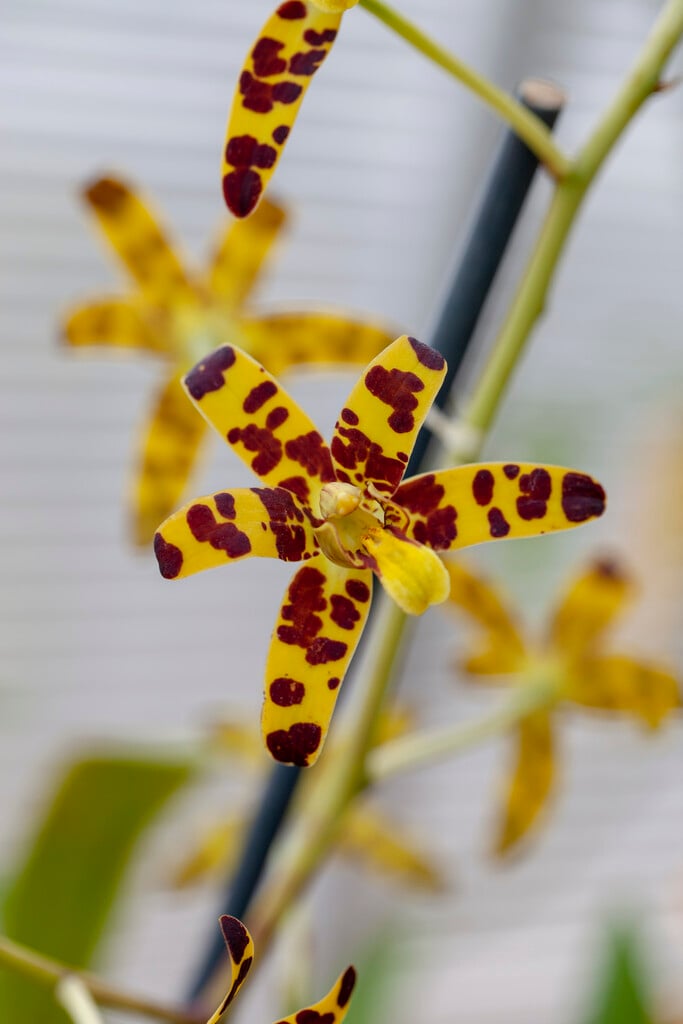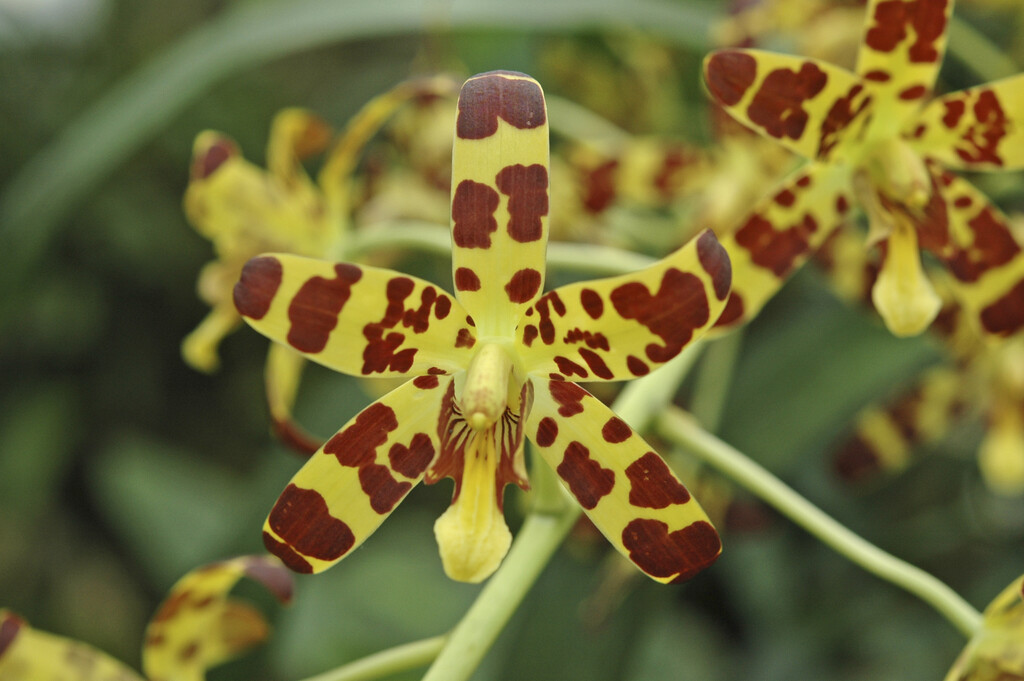Ansellia africana
leopard orchid
A large sized, epiphytic, evergreen orchid with upright, cane-like pseudobulbs. Six or seven, green, leathery leaves are alternately arranged on the upper half of each pseudobulb. Each lance-shaped leaf is 15-50cm long and 1.5-5cm wide. The size of the plant may be variable, with each stem (pseudobulb) measuring 50-120cm. Upright flowering stems up to 85cm long emerge from the upper nodes of mature canes and carry few to many, 2-3cm large flowers. Yellow flowers are often covered with dark brown, irregular spots that vary in size and density.
Size
Ultimate height
1–1.5 metresTime to ultimate height
5–10 yearsUltimate spread
0.5–1 metresGrowing conditions
Moisture
Well–drainedpH
NeutralColour & scent
| Stem | Flower | Foliage | Fruit | |
| Spring | Yellow Brown | Green | ||
|---|---|---|---|---|
| Summer | Yellow Brown | Green | ||
| Autumn | Yellow Brown | Green | ||
| Winter | Green |
Position
- Full sun
- Partial shade
Aspect
East–facing or South–facing or West–facing
Exposure
Exposed or Sheltered Hardiness
H1ABotanical details
- Family
- Orchidaceae
- Native to GB / Ireland
- No
- Foliage
- Evergreen
- Habit
- Clump forming, Tufted
- Genus
A genus of just one single species of perennial, epiphytic or sometimes terrestrial orchid, native to southern and tropical Africa with broad, tapering green foliage and 'leopard print' yellow and dark red flowers appear on long stems. The size and colouring within this genus can vary greatly
- Name status
Correct
- Plant range
- Tropical Africa
How to grow
Cultivation
Grow in an open, coarse bark-based orchid mix with addition of perlite and coconut chips. Provide bright light conditions, but shade from hot, direct mid-day sun. Ideal temperatures are 15°C minimum in winter and up to maximum 28 °C during summer day. Water and feed plants regularly during the growing season. Ensure that all water drains away, preventing the plant sitting too wet. Provide enough humidity by regular misting. Reduce watering and feeding in winter months and keep in a bright, sunny position. As with many orchids, they grow best when well-established and slightly pot-bound. Re-potting should be only done if the plant overgrows its container or before the potting mix starts to deteriorate - approximately once in 2-3 years. The plant should only be re-potted when the new growth appears in spring. See also indoor orchid cultivation.
Propagation
Mature plants may be divided when the plant overgrows its container. Each division should have at least 3 older pseudobulbs with a sufficient amount of stored energy and water, to support new growth and reduce stress after repotting.
Suggested planting locations and garden types
- Houseplants
- Conservatory and greenhouse
Pruning
No pruning required.
Pests
May be susceptible to mealybugs, aphids and scale insects.
Diseases
Generally disease-free.
Love gardening
Sign up to receive regular gardening tips, inspiration, offers and more
View our Privacy Policy
Get involved
The Royal Horticultural Society is the UK’s leading gardening charity. We aim to enrich everyone’s life through plants, and make the UK a greener and more beautiful place.

